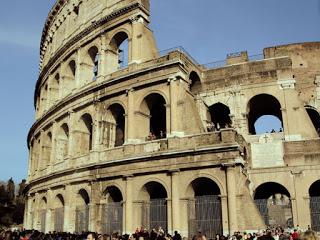
Join Our Rome Tours to Explore the Colosseum
Rising upwards in an ancient show architectural wonder, the Colosseum is one of Rome’s most stunning attractions. Also known as the Flavian Amphitheatre, it takes pride of place in the center of the city, harking back to a time when gladiator fights were the entertainment of the day.
It is the largest amphitheater ever built and is made from tavertine, tuff, and brick-faced concrete. Found near the historic Roman Forum, it remains one of Rome’s most visited sites and was constructed during the reign of emperor Vespasian in AD 72.
Over the years, wear and tear has partially ruined the Colosseum, leaving it with the rustic rubble look that it is so famous for. Earthquakes, stone robbers, and other elements have all played a part in the demise of the building, but it remains an important part of Imperial Rome’s past and is currently listed as one of the new 7 wonders of the world.
Today, it draws in crowds from all over the world who want to see the backdrop of ancient Roman games and to learn more about the historic past that imbues the city’s streets. It has links to the Roman Catholic Church and, every Good Friday, is the location for a torchlit procession by the Pope.
Roman Games at the Colosseum
Back in the day, the Colosseum was the backdrop for a variety of ancient Roman activities.
At one point in time, it could seat between 50,000 and 80,000 people who piled into the arena to watch gladiators fight each other to the death. Other shows included mock sea battles, animal hunts and fights, executions, and re-enactments of famous battles from the time.
Less gruesome showings included dramas and performances based on Classical tales from mythology and old Roman lore.
The Colosseum was used for entertainment purposes right up until the early medieval era when animal fights and gladiator battles were swapped out in favour of housing, workshops, and quarters for a religious order. Throughout the years it has also been used as a fortress, a quarry, and a Christian shrine.
Forming such an important and integral part of Roman history, the Colosseum is bursting with rich culture, history, and heritage that harks back thousands and thousands of years.
Today, the tourists that traipse through the maze of arenas and underground dungeons are a far cry from the metal-clad gladiators and snarling animals that once forfeited their lives in the name of entertainment.
To explore our range of Rome Tours, please visit: https://www.romecitytour.it/

